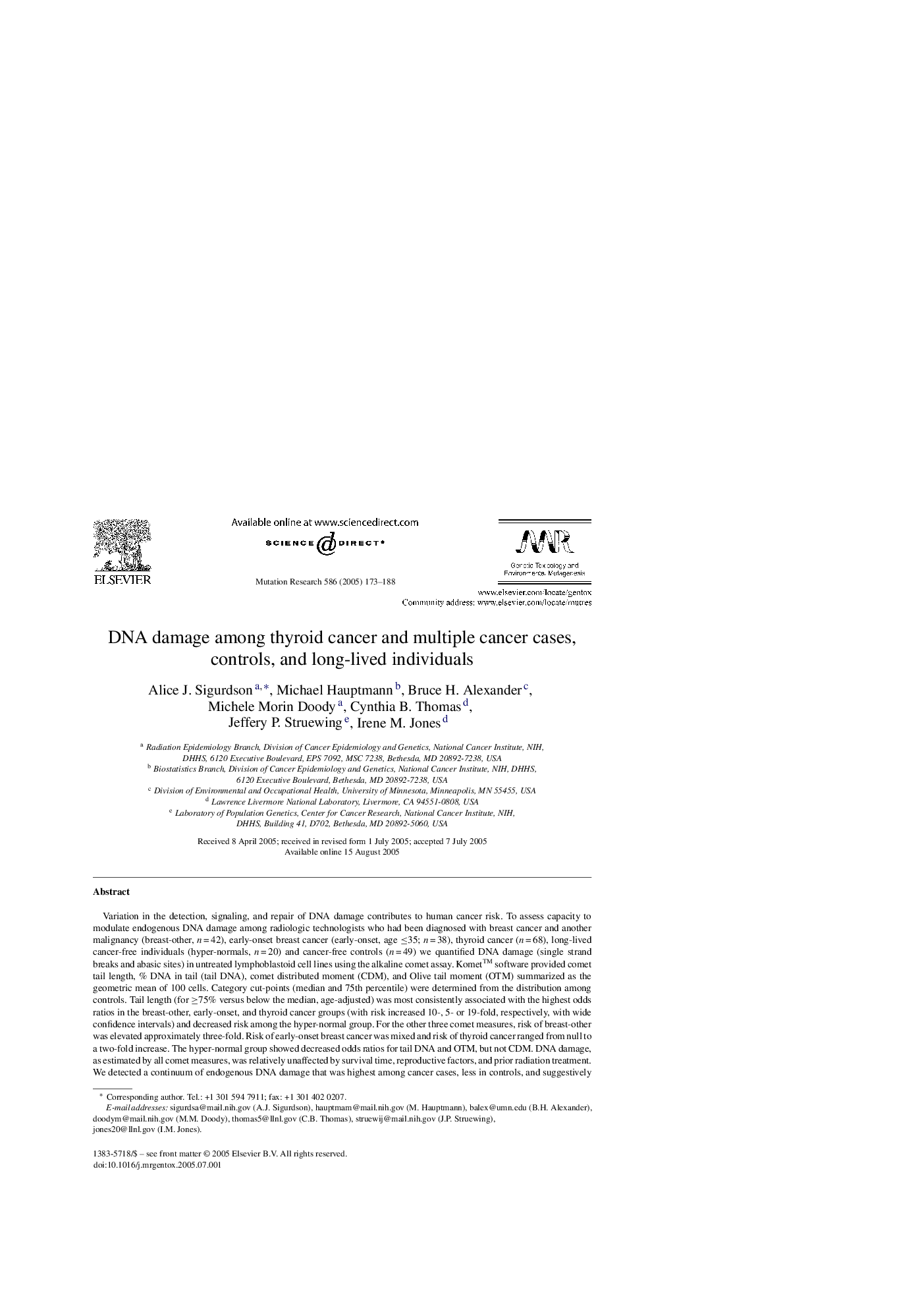| Article ID | Journal | Published Year | Pages | File Type |
|---|---|---|---|---|
| 10915067 | Mutation Research/Genetic Toxicology and Environmental Mutagenesis | 2005 | 16 Pages |
Abstract
Variation in the detection, signaling, and repair of DNA damage contributes to human cancer risk. To assess capacity to modulate endogenous DNA damage among radiologic technologists who had been diagnosed with breast cancer and another malignancy (breast-other, n = 42), early-onset breast cancer (early-onset, age â¤35; n = 38), thyroid cancer (n = 68), long-lived cancer-free individuals (hyper-normals, n = 20) and cancer-free controls (n = 49) we quantified DNA damage (single strand breaks and abasic sites) in untreated lymphoblastoid cell lines using the alkaline comet assay. Komet⢠software provided comet tail length, % DNA in tail (tail DNA), comet distributed moment (CDM), and Olive tail moment (OTM) summarized as the geometric mean of 100 cells. Category cut-points (median and 75th percentile) were determined from the distribution among controls. Tail length (for â¥75% versus below the median, age-adjusted) was most consistently associated with the highest odds ratios in the breast-other, early-onset, and thyroid cancer groups (with risk increased 10-, 5- or 19-fold, respectively, with wide confidence intervals) and decreased risk among the hyper-normal group. For the other three comet measures, risk of breast-other was elevated approximately three-fold. Risk of early-onset breast cancer was mixed and risk of thyroid cancer ranged from null to a two-fold increase. The hyper-normal group showed decreased odds ratios for tail DNA and OTM, but not CDM. DNA damage, as estimated by all comet measures, was relatively unaffected by survival time, reproductive factors, and prior radiation treatment. We detected a continuum of endogenous DNA damage that was highest among cancer cases, less in controls, and suggestively lowest in hyper-normal individuals. Measuring this DNA damage phenotype may contribute to the identification of susceptible sub-groups. Our observations require replication in a prospective study with a large number of pre-diagnostic samples.
Related Topics
Life Sciences
Biochemistry, Genetics and Molecular Biology
Cancer Research
Authors
Alice J. Sigurdson, Michael Hauptmann, Bruce H. Alexander, Michele Morin Doody, Cynthia B. Thomas, Jeffery P. Struewing, Irene M. Jones,
